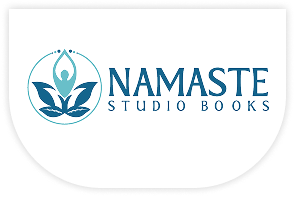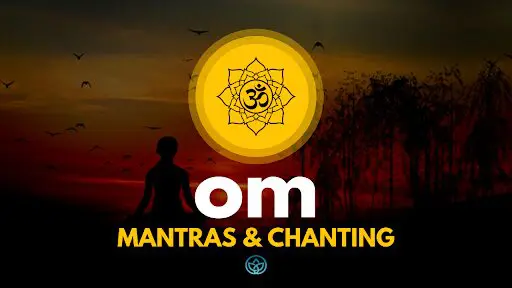Unlocking the Power of Mantras and Chanting in Yoga Philosophy and Spirituality
By Dennis Bluthardt, Namaste Studios
Yoga is not just postures and flexibility. It is based on philosophy and ancient spirituality. Yoga is holistic and promotes overall well-being and self-awareness by connecting all parts of the self, incorporating the mind, body, and spirit. This is an opportunity to delve into the spiritual aspects of yogic philosophy and teachings!
Mantras and chanting practice stem from ancient spirituality tied to Hinduism and the sacred language of Sanskrit. A mantra is a powerful vibrational sound with a specific meaning or intention. The sound helps focus the mind during states of meditation. You can repeat sounds to reach the desired meditative state and connect more deeply to your inner self and the universe. Using mantras serves as a one-pointed focus of concentration, where the mind can connect with oneself and the vast universe.
Chanting, combining sounds, often coordinated with breath rhythm, serves as a connection between the mind and the sacred songs or shlokas stemming from the yogic tradition and to help students of yoga connect with themselves and evoke such deep, emotional responses that allow students to experience a profound shift in consciousness. This shift can be incredibly transformative and can take the form of deep openings of the heart, insights/clarity reaching up from the inner self and into one’s consciousness, or more community-building experiences with the many other students attending the same group classes. Connect more to pure consciousness or universal energy/vibration overall.
Mantras and chanting are more meditative, relaxing, and peace-inducing overall. You may perform mantras seated or lying down. Yoga is a holistic practice that can encourage more compassion and mindfulness.
The Significance of Mantras
During yoga and meditation practices, we repeat the sacred sound, word, or phrase that serves as our mantra, derived from the Sanskrit roots “man” (mind) and “tra” (instrument). So, mantras exist to effortlessly direct the mind on its journey toward relaxation and reflection; they facilitate focus in our subconscious mind to unlock our ability to meditate. Because of this, people often use a mantra to join with their yoga and/or meditation practice.
Some celebrated yoga poses have benefits that are the same for meditation but to varying extents. For instance, you will find that perhaps every chant on the face of the earth incorporates the “Om” somewhere. This sound is, of course, the vibration that symbolizes the essential nature of the universe. As such, it is the most common in yoga practices.
In other words, you will seldom chant alongside your yoga practice; instead, if you (and/or your classmate practitioners) choose to chant your way into meditation, you take your turn at the hands of a “Kirtan,” “So Hum,” etc. Kirtan, of course, refers to the celebratory community chanting that often engenders increased feelings of bliss among us; “So Hum” (“I am that”) is the contemplative that we use to facilitate body and mind exploration and mapping. These chants join the ranks of their fellow Sanskrit mantras in bringing deep, focused, vibrant vibration into various devotional poses, encouraging practitioners in unison to connect with the earth (or with some other personal, place-related item on the meditation plate).
The Practice of Chanting
Chanting has been practiced throughout millennia in all different creeds. From reciting Vedic scriptures in ancient Hindu tradition to the Gregorian chants of early Christianity, chanting has been integral to spiritual development and community. Chanting is used in rituals and ceremonies and even in remembering oral teachings.
Chanting helps us focus on the moment, increasing the benefits of exercise, meditation, and our lives.
The mental and emotional benefits of chanting are also powerful. These days, people do it often to help cope with anxiety, not to get closer to any god. Not having to worry for just a few minutes, allowing you to enjoy your day without feeling overwhelmed by dread, is more than enough for many people.
Integrating Mantras and Chanting into Your Practice
Choosing your mantra is a profoundly personal journey, and there are many phrases that we might select to enhance a meditative practice. What values do you hold dear? What future are you trying to attract? What emotions do you want to experience more within yourself? Your mantra will be words that evoke peace, strength, love, or some other desired emotion. Your mantra might be a saying in Sanskrit, Latin, or, yes, even English. There are no defined limits to what exactly your mantra will be other than it should resonate with you. Try on a few for practice if you like.
Where does “intention” come into play? The yoga sutras of Patanjali describe how you can include mantras into your practice by setting a clear intention (your future as it has already become present). This chant is held for some time as you mentally observe your chosen mantra. Creating your desired “as it is” intention, you then chant as if your future has already manifested.
Slowly introduce times of your chant as part of your regular meditative practice. He suggests including up to 5 minutes of chant time and a quiet, continued meditation period. Chant practice includes maintaining a chant schedule daily or even just a few times each week at the most impactful times during your day.
Ready to learn more about the mantra? Resources on the web are available for learning. Knowledge from books is available, too. And there are mantra apps that you can download to an electronic device such as your phone. Helpful resources are available in books, such as the widely available “The Power of Mantra” book by Swami Satchidananda. Apps such as Insight Timer are available via an online app store. Did you know you can book online courses to learn how to add mantra practice to your meditation practice?
Understanding Yoga Philosophy
Yoga’s philosophy and spiritual ideology are embedded into statements (called “sutras”) outlining the principles and practices that make up the discipline. With emphasis on moral life, mind focus, and meditative practice, these sutras offer a stepping-stone guide to spiritual growth and detail the eight limbs of yoga, which include Asana (postures), Pranayama (energy control), and Dhyana (meditation).
You may ask yourself, “How is spiritual ‘growth’ defined in yoga, and what does that even mean?” So, here it goes: “spiritual growth” is gaining a deeper understanding of yourself and the universe, separating the temporal identity from the eternal consciousness that makes you, well, you. True to yoga, the path is not strictly physical; starting, there is a mild focus on the physical to aid in health and wellness, after which the philosophy shifts to selfless exploration, compassion, concentration, meditation, and realization that you and I are different manifestations of the same life-given energy.
In yoga philosophy and spirituality, mantras and chanting are often heavily used in meditation for self-discovery. These are simply sounds or vibrations that correlate with the vibration and sound of the universe around us. The practitioner finds peace, stillness, and calm in making these sounds (mentally and/or physically). The mind can now focus on what is occurring versus the perpetual onslaught of daily life. Producing sounds to chant a mantra is also a great way to feel calming energy. If you are still trying to figure out where to begin, start by creating your life mantra.
When you feel right, please share your personal experience in the comments. There is so much to discuss regarding mantras and chanting that your story or advice will surely help someone who reads it.

